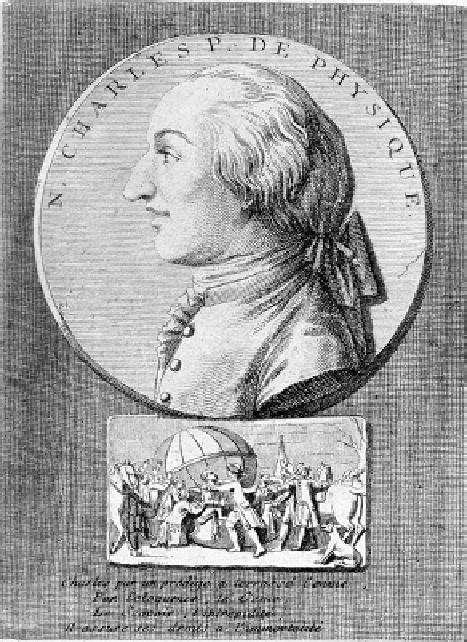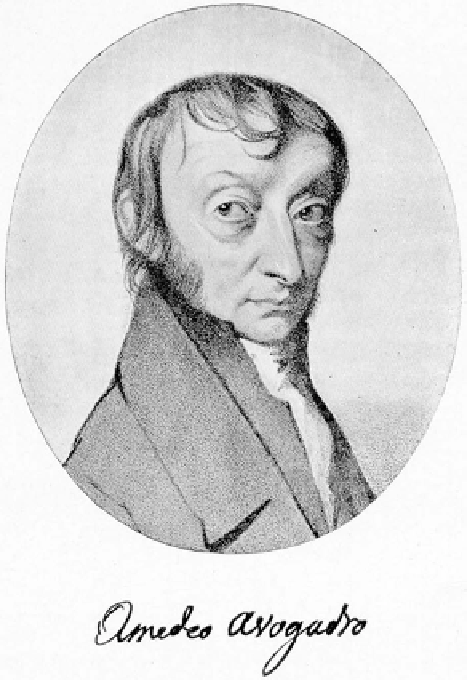Geoscience Reference
In-Depth Information
Figure 3.7.
Jacques Alexandre Cesar Charles
(1746-1823). Edgar Fahs Smith Collection, University
of Pennsylvania Library.
Figure 3.8.
Amedeo Avogadro (1776-1856). Edgar
Fahs Smith Collection, University of Pennsylvania
Library.
replicate the feat. Instead of filling his balloon with hot
air, Charles filled it with H
2
(g), a gas fourteen times
lighter than air first observed by Paracelsus and isolated
by Cavendish. The balloon was launched on August 27,
1783, and flew for forty-five minutes. When it landed,
the balloon, a new innovation, was ironically hacked to
pieces by frightened farmers.
In 1811,
Amedeo Avogadro
(1776-1856), an Italian
natural philosopher and chemist (Figure 3.8), discerned
the difference between atoms and molecules. He found
that molecular oxygen and nitrogen gas, believed to be
single atoms at the time, were really molecules, each
consisting of two atoms. He went on to hypothesize that
equal volumes of all gases at the same temperature and
pressure contained the same number of molecules. In
other words, the volume of a gas is proportional to the
number of molecules of gas present and independent of
the type of gas. This relationship today is
Av ogadro's
law
:
where
n
is the number of gas moles. The number of
molecules in a mole is constant for all gases and given
by
Av ogadro's number
,
A
10
23
molec
mol
−
1
.Avogadro did not devise this number nor was
the term “mole” in the chemical vocabulary during his
lifetime. In 1865, Austrian chemist
Joseph Loschmidt
(1821-1895), who isolated the first aromatic com-
pounds, estimated the size of an air molecule and the
number of molecules in a cubic centimeter of gas.
Avogadro's number was devised soon after.
Combining Boyle's law, Charles's law, and Avo-
gadro's law gives the ideal gas law or simplified equa-
tion of state as
=
6.02252
×
R
∗
A
T
nR
∗
T
V
nA
V
=
=
=
p
Nk
B
T
(3.6)
where
nA
V
N
=
(3.7)
V
∝
n
at constant pressure and temperature
(3.5)



Search WWH ::

Custom Search